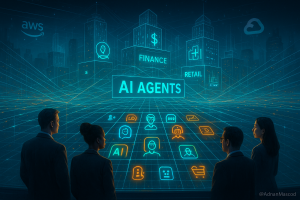The truth? Training isn’t just about keeping employees competent. Done well, it transforms your workforce into a sharp, agile, and motivated team that drives growth, innovation, and loyalty.
Let’s peel back the layers of why investing in employee training is one of the smartest decisions you can make for your business.
1.Building Skills That Supercharge Productivity
Training isn’t just about teaching people how to push the right buttons or follow a checklist, it’s about unlocking untapped potential.
Think of training as sharpening the collective blade of your team:
Technical Mastery: Whether it’s mastering a new CRM, safely operating machinery, or staying ahead in industry-specific know-how, technical training turns confusion into confidence.
Communication That Lands: Clear, confident communication—spoken, written, or digital keeps projects flowing and customers feeling heard.
Leaders in the Making: Leadership training creates not just managers but vision-setters people who can rally teams, make smart decisions, and push projects forward.
Critical Thinking: Training cultivates employees who don’t just spot problems but engineer creative solutions.
Customer Care with Heart: When employees are trained to truly listen and respond, customer service becomes a loyalty magnet.
Time Mastery: Good training teaches organization and prioritization, cutting wasted hours and boosting efficiency.
Resilience Training: In times of rapid change, adaptability is king. Training equips employees to pivot instead of panic.
Every skill upgrade directly fuels productivity and in a competitive world, productivity is profit.
2.Thriving in a World That Never Stops Changing
Markets morph. Software updates. Regulations evolve. A team stuck in old ways quickly becomes a liability.
Employee training is your insurance policy against irrelevance. It keeps your people fluent in the latest tools, trends, and best practices, ensuring your business stays competitive, nimble, and future-ready.
3.Engagement and Loyalty: The Human Side of Training
Here’s a secret: people don’t just work for paychecks—they crave growth. Employees who feel their employer is investing in them are far more likely to feel valued, stay longer, and give their best energy.
Training creates that culture of continuous growth. It tells your team: You matter. We believe in your future. And that message pays dividends in engagement, loyalty, and morale.
Happy employees don’t just clock in; they show up with ideas, initiative, and commitment.
4.Preventing Mistakes Before They Happen
Training is also about safety, physical, digital, and reputational. Without it, errors multiply, accidents happen, and lawsuits or compliance failures loom. With it, costly mistakes become rare exceptions.
What training can prevent:
Safety violations in industrial settings
Data breaches from weak cybersecurity habits
Medical errors in healthcare environments
Process bottlenecks from outdated workflows
Customer service missteps that spark complaints
Workplace conflicts left unresolved
Environmental compliance violations that trigger fines
Training doesn’t just improve performance—it builds a culture of responsibility, awareness, and precision.
5.A Competitive Edge That Sticks
In crowded markets, what really sets businesses apart? Often, it’s not the product, it’s the people delivering it.
A well-trained workforce is like a secret weapon: efficient, confident, innovative, and customer-obsessed. They don’t just react to change; they anticipate it. They don’t just serve customers; they wow them. That level of excellence becomes your competitive edge—one that keeps customers returning and attracts new ones.
The Bottom Line
Employee training isn’t a line item expense—it’s a long-term investment that yields measurable returns in productivity, engagement, safety, and growth.
In a world where change is the only constant, a trained workforce is your anchor and your sail: steady enough to weather storms, sharp enough to catch new winds of opportunity.
So the real question isn’t: Can we afford to invest in training?



